Warren Feeney – 9 February, 2011
It is characterised by a disregard for the preciousness of the space of the art gallery itself, as though curator and artists…are pleased to finally clear their feelings about art galleries, constructing works that obstruct visitors, that startle and surprise or encroach upon their personal space in ways that are seriously uncomfortable.
Christchurch
Billy Apple, Monica Bonvicini, Eddie Clemens, Susan Collis, Fiona Connor, Glen Hayward, Pierre Huyghe, Liz Larner, Callum Morton, Peter Robinson, Kay Rosen, Santiago Sierra, Gordon Matta-Clark, Rachel Whiteread
De-Building
Curated by Justin Paton
5 February 2011 - 15 May 2011
An art exhibition about dismantling and assembling art exhibitions? Who could have believed that a show such as De-Building could have existed ten years ago? Yet, this is not the first time that the Christchurch Art Gallery has dealt with the art gallery as a subject for a show. In 2009, The Vault, an exhibition of large-scale photograph by Neil Pardington revealed the mundane reality and beauty of the storage rooms of museums and galleries throughout New Zealand. So the timing of De-Building raises a number of question; Are the things that art gallery staff do really of interest to anyone else and when curators start putting together exhibitions that focus on the nuts and bolts of how their intentions are realised, is this a benchmark of their rising authority in the contemporary art world?
The answer to both questions may be ‘yes’, but in spite of these reservations, De-Building effortlessly rises above the specifics of its curatorial brief to take the gallery visitor ‘behind the scenes,’ instead addressing far more engaging speculation about the frailties of human behavior and the tenuous values we assign to art. Senior curator Justin Paton has assembled a group show that is without precedent in Christchurch. It all looks and feels just right. De-Building brings together an impressive line up of 14 artists from New Zealand, Germany, Great Britain, France, the United States and Spain across four generations of arts practice for all the right reasons. It confidently shifts from an art historical treatise on conceptual art to a survey show of international practice to a showcase of recent acquisitions by the Christchurch Art Gallery.
In their consideration of architectural space and critique of the art gallery environment, New York artist Gordon Matta-Clark’s Splitting and Bingo/Ninths (1974) and Billy Apple’s Censured Realised, Brooke/Gifford Gallery, Christchurch (1979) provide an historical and conceptual context for De-Building that resonates throughout the exhibition’s many highlights, including Liz Larner’s Wrapped Corner (1991) and works commissioned for the exhibition by Peter Robinson, Kay Rosen and Callum Morton.
And it is more than just the ease with which De-Building crosses traditional curatorial boundaries that makes it an inspired show. Not only is it unique as an exhibition that locates the work of New Zealand artists within the context of international arts practice seemingly indifferent to the dutiful need to argue that the country’s art is ‘out there,’ it is also characterised by a disregard for the preciousness of the space of the art gallery itself, as though curator and artists have taken to their tasks with considerable glee. There is a tangible empathy between the curatorial brief for this show and the participating artists, as though all parties are pleased to finally clear the air and their feelings about art galleries, constructing works that obstruct visitors, that startle and surprise or encroach upon their personal space in ways that are seriously uncomfortable. Peter Robinson’s monument to storage and display facilities, Cache, narrows and confines the visitor’s point of entry and Callum Morton’ biggest crate ever in the Christchurch Art Gallery, Monument # 24: Goodies is genuinely intimidating, while Monica Bonvicini’s projected film, Hammering Out (an old argument), makes it feel as though the gallery wall is in an eternal state of demolition.
And just as De-Building is an exhibition typified by the very physical nature of its work, it also maintains a conceptual resonance that just doesn’t let up. There is a vital melancholy in the way this show touches upon notions about the fleeting ambitions of humanity, or the gallery as artifice and deceiver, or as Paton observes, the mortality of art. From its signage to the exhibition catalogue’s design and the assured selection and orchestration of works, De-Building is easily the Christchurch Art Gallery’s finest group show since it opened in 2003.
Warren Feeney
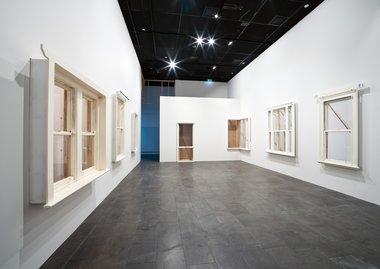

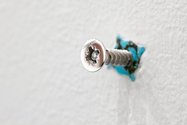




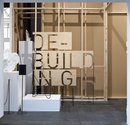


 Two Rooms presents a program of residencies and projects
Two Rooms presents a program of residencies and projects Advertising in this column
Advertising in this column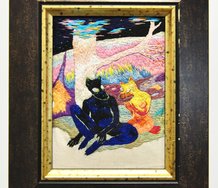
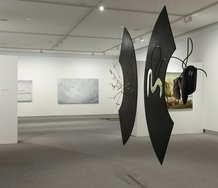
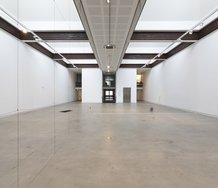

This Discussion has 0 comments.
Comment
Participate
Register to Participate.
Sign in
Sign in to an existing account.